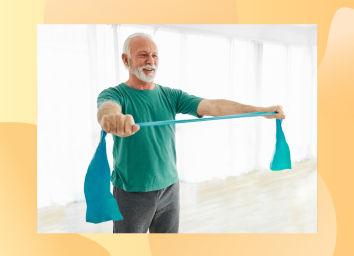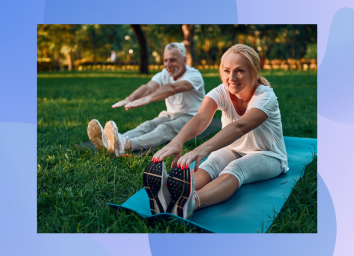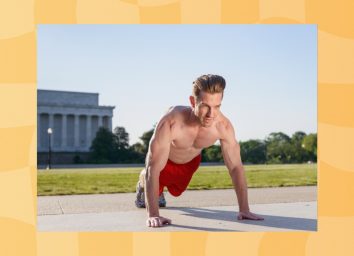The #1 Worst Yoga Move If You're Over 50, Says an MD
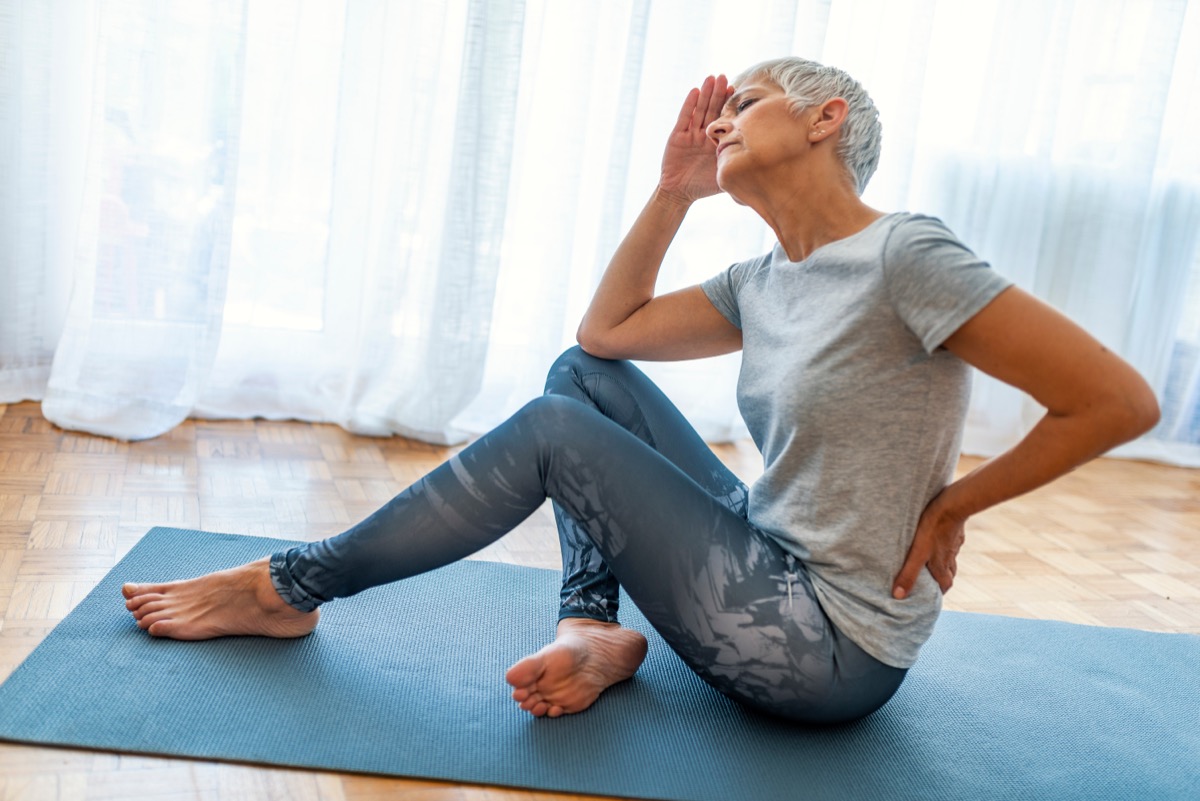
For many people looking to incorporate low-impact exercise into their regular routine, yoga seems like the perfect fit. Great for improving your cardiovascular health, reducing stress, and boosting flexibility, yoga is often touted as a near-perfect workout program for older adults and those with mobility issues.
"With proper supervision, guidance, and preparation, yoga as an overall practice has a very low rate of injury and conveys multiple health benefits that can make it an excellent part of a general wellness practice," says Jacob Hascalovici, MD, Ph.D., chief medical officer and co-founder of telehealth platform Clearing.
However, when it comes to staying strong and fit, not all yoga moves are created equal. In fact, experts say that one move, in particular, could increase your risk of an injury that can leave you sidelined.
Read on to discover which yoga move could be putting your safety at risk. And if you want to boost your wellbeing, check out The 7 Healthiest Foods to Eat Right Now.
Doing backbends could be putting you in harm's way
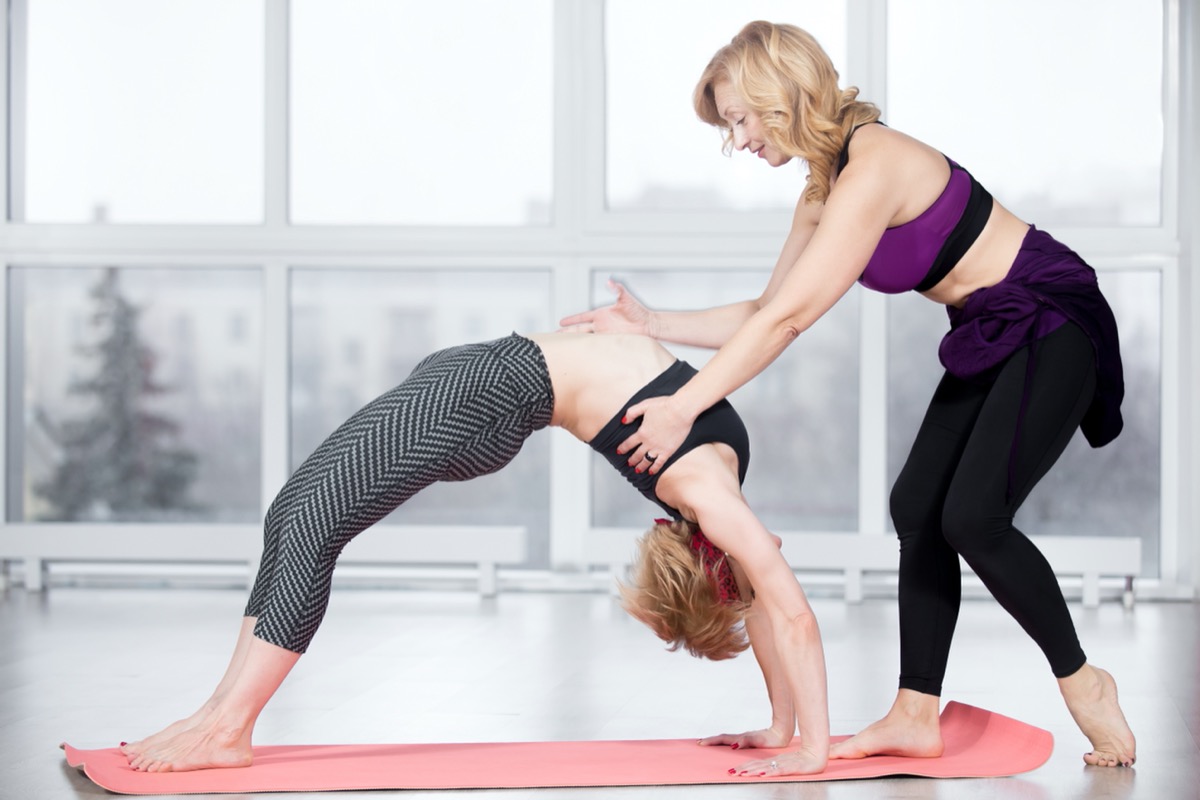
Backbends may feel great, but they may present a major safety risk for some older or inexperienced yoga students.
"Backbends (including Wheel, Camel, Bridge, and Cobra) curve the spine, sometimes extensively," says Hascalovici. "When executing backbends, practitioners should move slowly and smoothly, if possible, tighten their abs to support their weight, avoid resting weight on the neck (to get into plow pose, for example), and should not move the head quickly while moving into the pose," Hascalovici explains.
He also notes that backbends may be particularly risky for individuals with chronic back pain. In fact, according to one survey of 1,299 yoga practitioners, among those who became injured during yoga, 19.4% developed lower back injuries, with backbends being the most commonly-reported cause.
Related: Sign up for our newsletter for the latest Mind + Body news!
Plow poses, inversions, and shoulder stands may also be risky
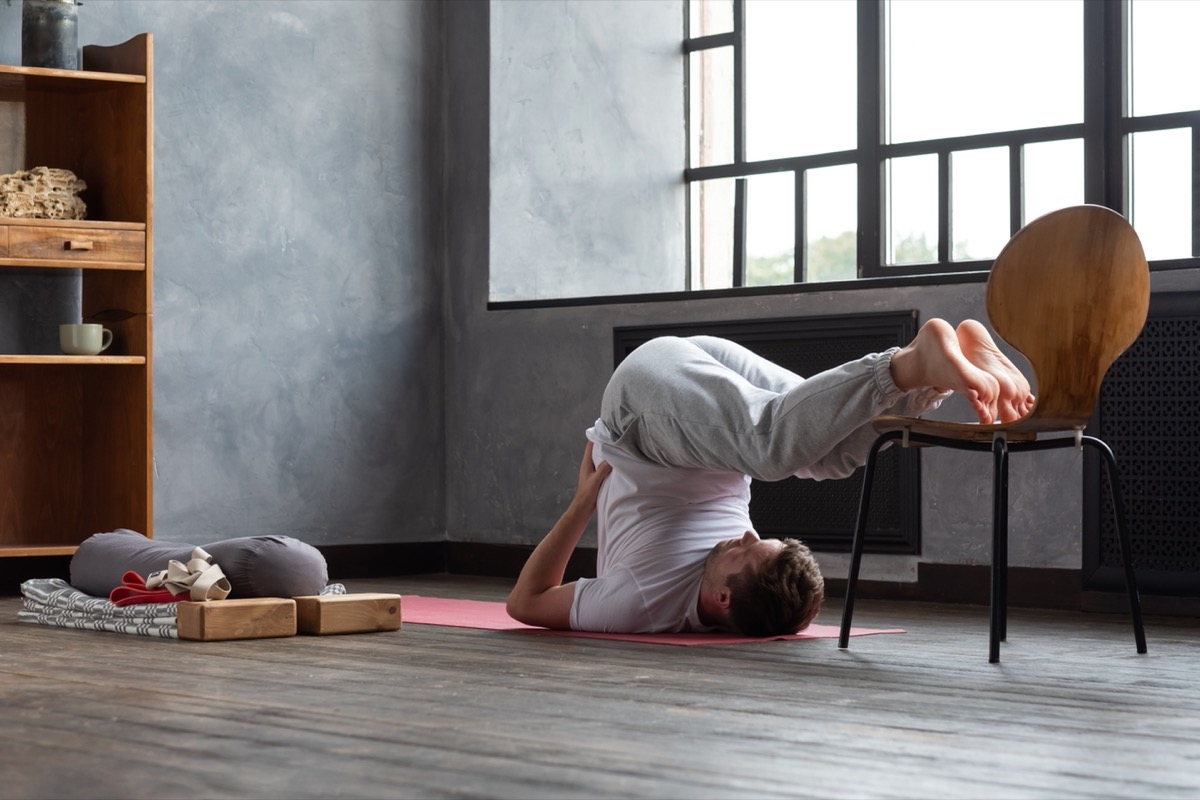
If you want to protect your neck and back during your yoga practice, Hascalovici recommends attempting plows, inversions, and shoulder stands with extreme caution—and expert guidance.
"When performing these, the practitioner shouldn't 'leap' into the pose by kicking their legs over their head," says Hascalovici. "They should use a wall and/or spotter to practice until they are confident, and should also know how to get out of the poses in a controlled manner. These movements, in general, can put a lot of weight on relatively sensitive areas of the neck and upper back, particularly if they are not performed correctly."
Related: Surprising Effects of Doing Yoga, Says Science
Forward folds and planks may put you at risk for repetitive use injuries
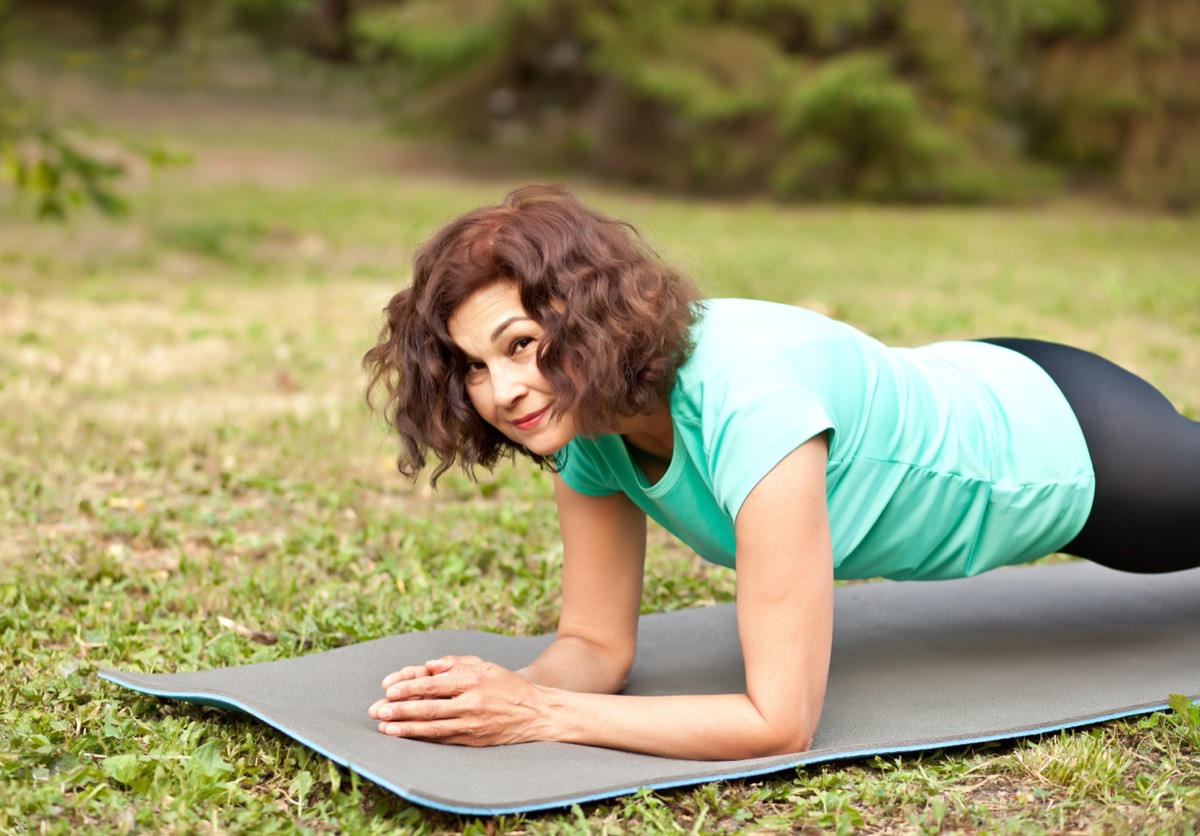
While forward folds and planks may not seem as complex as many yoga poses that require extreme flexibility, Hascalovici says that they can cause serious injuries just the same.
"Unless these poses are being executed with good technique, practitioners can experience strains and overuse injuries. With forward fold, it's possible to strain the hamstrings, while plank pose can put repetitive stress on the hands and wrists," says Hascalovici. "For frequently performed poses, technique is crucial. With planks, for example, it can help to spread the fingers and distribute weight evenly, including to the area between the thumb and other fingers."
According to the survey of pain among yoga practitioners, forward bends were the second-most-common cause of lower back pain during yoga.
Related: 3 Major Secrets to Living to 99, According to Betty White.
Talk to your doctor before you start a new yoga routine

Before you jump into a new yoga routine, it's important to discuss your workouts with your doctor to ensure that you're physically fit enough to complete them without injury.
If your doctor has cleared you to start practicing yoga, Hascalovici says you should still tell your yoga teacher about any physical limitations you have before getting started.
"If anyone has recent injuries, is experiencing chronic pain, or has other specific concerns, it's best to mention them upfront to the yoga teacher and to seek appropriate modifications," Hascalovici explains.
Related: Over 60? These Are the 4 Best Weight-Loss Exercises You Can Do, Trainer Says
Keep a few best practices in mind before hitting the yoga studio
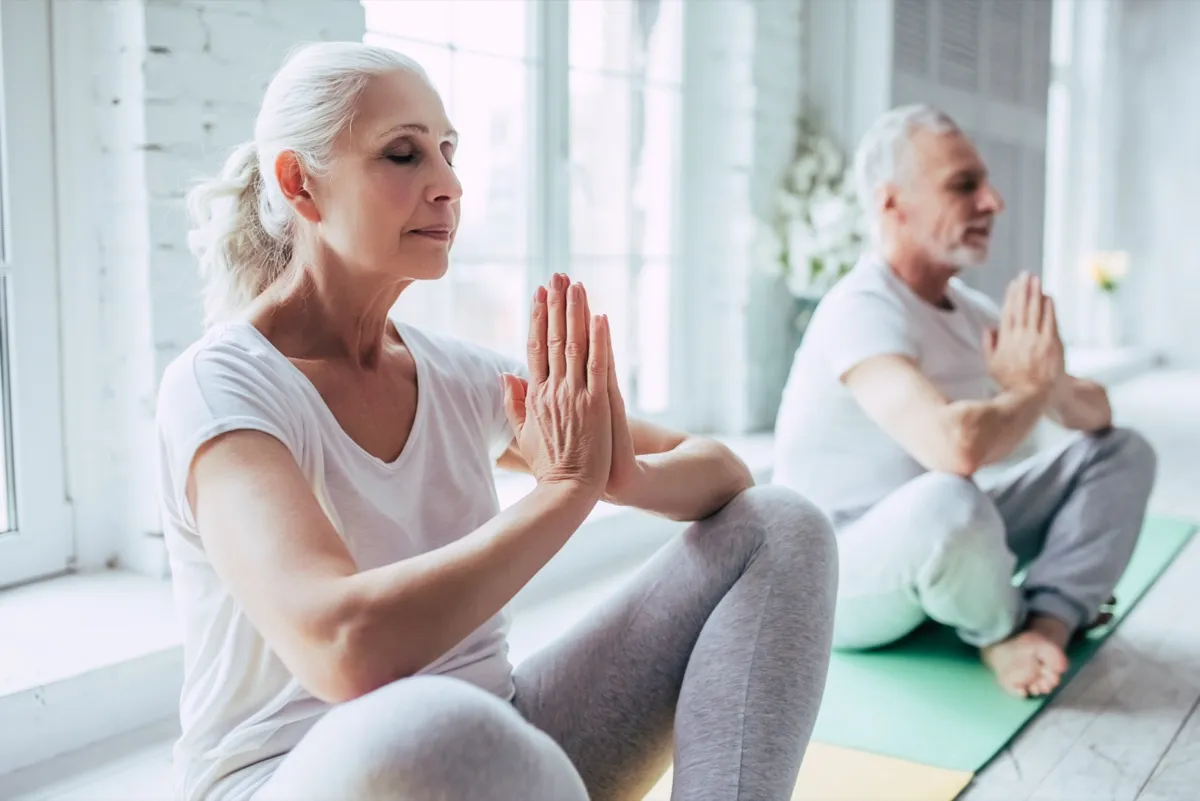
Even if you have no injuries to note and your doctor has said you're ready to start practicing yoga, Hascalovici says there are a few considerations to keep in mind before embarking on your yoga journey.
Hascalovici recommends warming up before you get started, moving slowly and in a controlled manner, using blocks for balance and knee cushioning during kneeling moves, and asking your yoga teacher for regular feedback about your form. Additionally, he says that if something feels wrong, it's important to listen to your body.
"Don't push through pain, but pay attention to it instead, to help avoid injuries," Hascalovici says.
For more Mind + Body news you can use, check out This Indoor Activity Can Be Just as Effective as Jogging.
